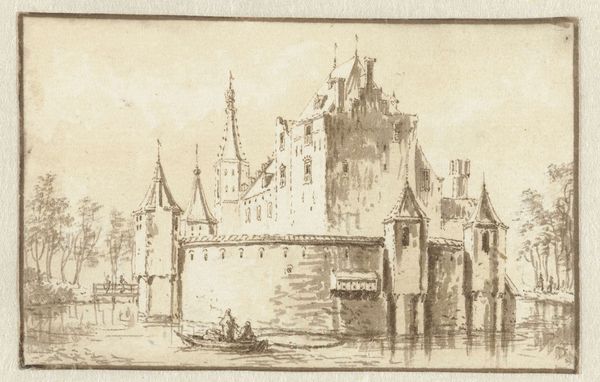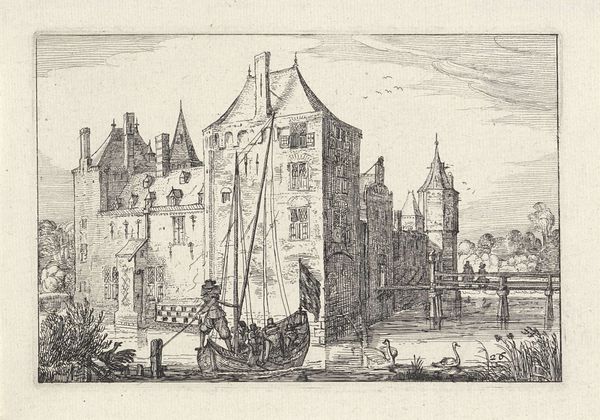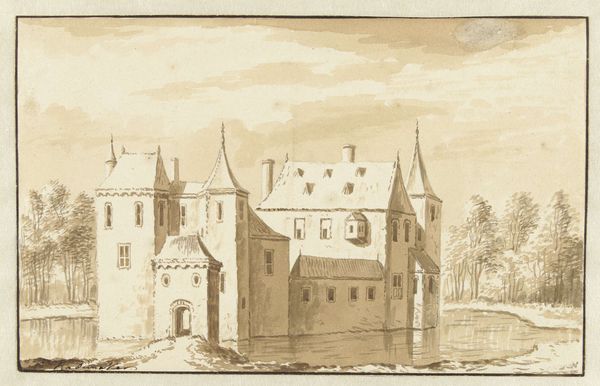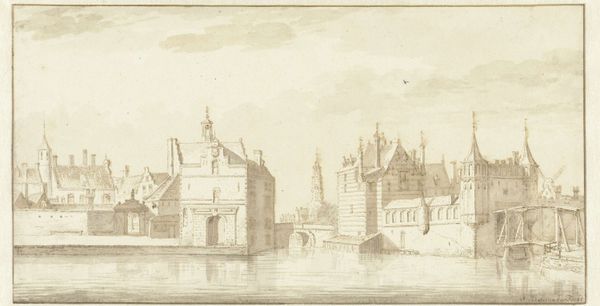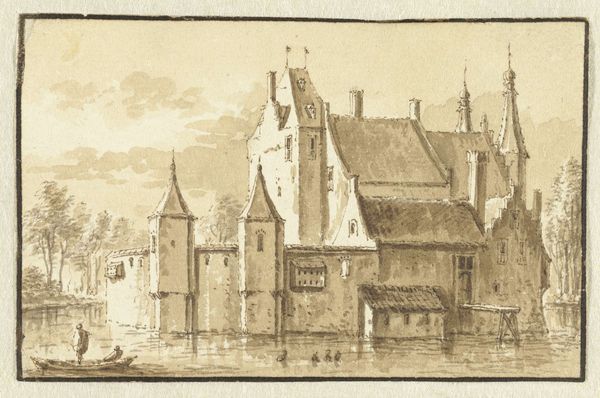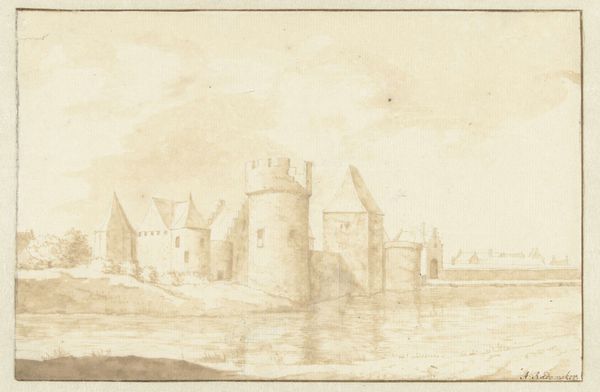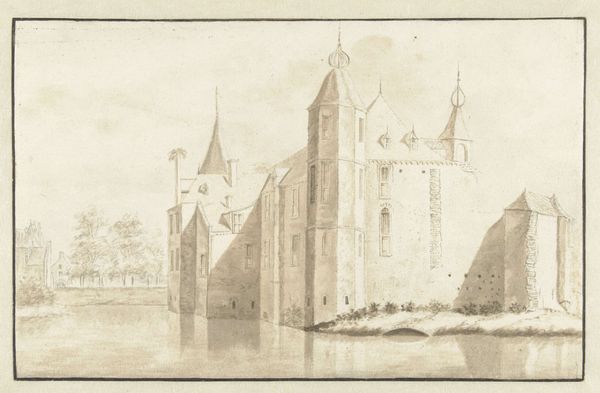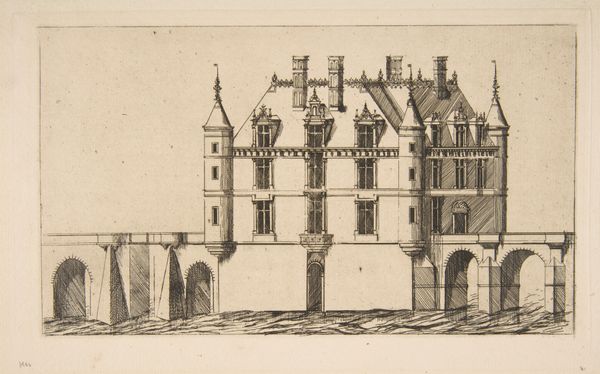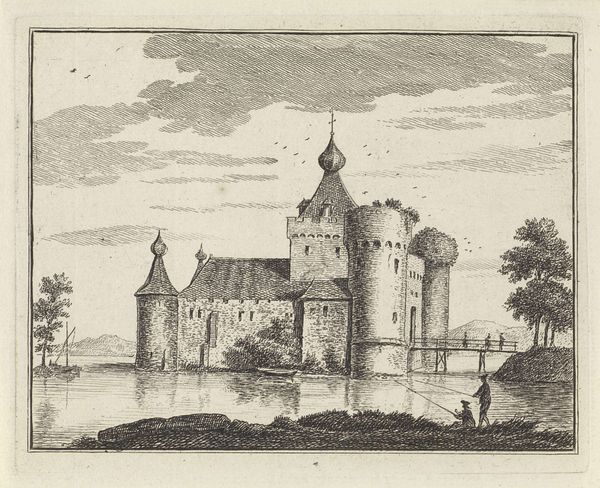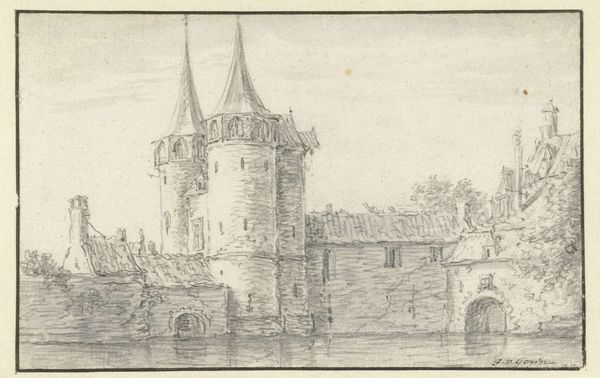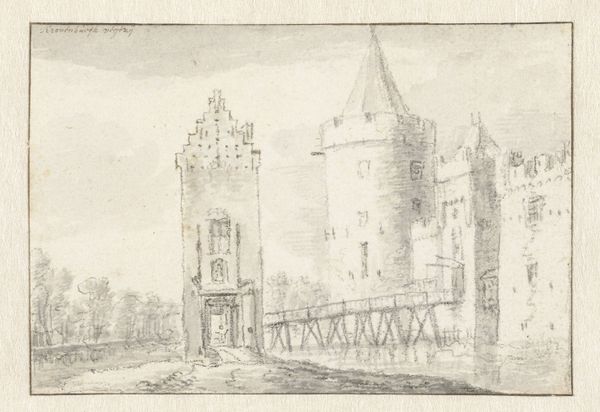
drawing, paper, ink, architecture
#
architectural sketch
#
drawing
#
aged paper
#
toned paper
#
quirky sketch
#
baroque
#
old engraving style
#
sketch book
#
landscape
#
paper
#
personal sketchbook
#
ink
#
sketchwork
#
sketchbook drawing
#
storyboard and sketchbook work
#
architecture
Dimensions: height 86 mm, width 165 mm
Copyright: Rijks Museum: Open Domain
Curator: Looking at this drawing, what do you first see? Editor: Haunting, actually. The sepia tones lend it an air of something recalled from memory, perhaps a cherished place half-forgotten, rendered on aged paper, that speaks to a life well-lived and then receded into shadow. Curator: Indeed. What we’re seeing is Abraham Rademaker's "Huis Kronenburg aan de Vecht," a work somewhere between 1722 and 1733. The materials used include ink on paper. It provides an exterior view of the titular "Huis," that’s Dutch for "House", also known as the castle of Kronenburg along the Vecht River in the Netherlands. Editor: It’s a curious blend, isn’t it? Part architectural record, part evocative daydream. The sketchwork has a delicacy to it. Do you feel as if Rademaker was simply trying to document the architecture as it existed, or maybe attempting to suggest an essence beyond mere structural accuracy? Curator: Rademaker often captured estates and buildings destined for demolition, preserving visual records of Dutch heritage that would otherwise be lost to time. His works carry a lot of socio-historical information with them, wouldn’t you say? Editor: I would, and there's such beauty here in the everyday. Castles represent an older, more oppressive era in the popular mind. We like to think these structures would have once played important functions to defend populations and exert dominance; today they still exist as tourist locations, as mere commodities meant for people’s amusement. Curator: They sure don’t build them like they used to. If this image is anything to go by, Huis Kronenburg would have had a moat, ramparts, and an iconic, imposing tower that has stood the test of time, so to speak. This building might inspire more questions about Rademaker’s perspective regarding the relationship between private property and art in the Netherlands. Editor: Very interesting to consider the implications in that way! In any event, looking again, it makes me want to be there... to take in the smells, and imagine who occupied these halls and fields of glory in times of peace or war, don't you feel so? Curator: Precisely! Such artworks can enrich our appreciation of cultural heritage. Editor: Yes! An amazing testament to the power of art and our relationship with buildings throughout time.
Comments
No comments
Be the first to comment and join the conversation on the ultimate creative platform.
